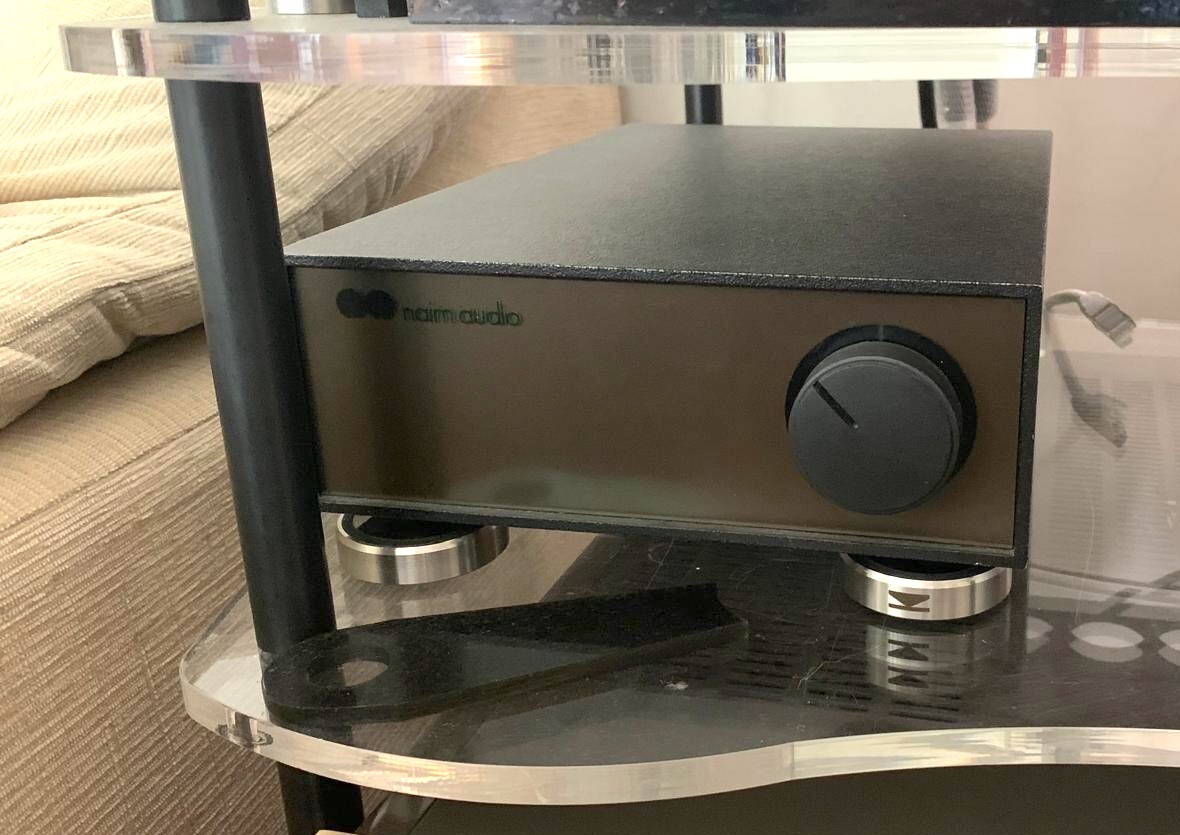Which raises a philosophical question: when does an LP12 cease to be an LP12? My FrankenLinn may evolve with non-Linn parts, but does that stop it being an LP12? I won’t pretend to have the answer, but neither, I will argue, does Linn or anybody else. Is the LP12 an object or is it an idea? Linn devotees might suggest the former, those who have fallen away from the Linn religion over the years would probably suggest the latter. After all, my LP12 (as bought) is pretty much a snapshot in time. It is indubitably an LP12, even if it has no parts in common with current production. But I’m more interested in what it does than what’s inside, so I’m firmly in the ‘LP12 as idea’ camp. I want more LP12, rather than more Linn. So perhaps it’s no surprise that I’ve ended up with an Armageddon. The LK1/LK2 might have been the first crack in the Linn/Naim monolith, but the turntable power supply was a direct assault on the ‘holy of holies’ nether regions. You couldn’t make a clearer statement as to which side of the line you stood than adopting the Armageddon (as opposed to the ‘church approved’ Lingo).

Start as you mean to go on, so it should come as no surprise that I’m going to diverge significantly from Linn’s upgrade path. But this isn’t going to turn into a review or blog about a selection of competing, aftermarket Linn modifications and which you should choose. I have something specific in mind: there’s something a little bit different on offer here, and I’m interested to see where it ends up taking me.
Some time ago when I wrote about AcouPlex, the composite material developed by MusicWorks in the UK (and which is proving to have some very effective, some might say remarkable, damping and energy management capabilities Casting a spell… – Gy8) I mentioned that a sub-chassis and arm-board for the LP12 were in development. At that point I’d heard a pre-production example fitted to an early LP12 and the performance lift was quite extraordinary: extraordinary enough to encourage my plunge into LP12 ownership.
At that time, the parts were a work in progress, Steve Jackson leading the development with MusicWorks, alongside other mods. Now, there’s a finished product, and I’m going for the treatment, together with the other major modification Steve has developed, a new and very different top-plate. As well as its non-resonant construction, this relocates the motor from the rear-left to the front-left corner, aiming to better align drive belt tension, the main and tonearm bearings, reducing the influence of any torque reaction on the sub-chassis, the arm-board and, in turn, the relationship of the cantilever and stylus to the record surface. Any twisting effect on the suspension as a result of motor torque or drive belt tension is no longer at 90 degrees to the stylus contact point, thus minimising its impact on tonearm and cartridge behaviour. It’s an idea first put forward, I believe, by Pink Triangle and Funk Firm designer Arthur Khoubesserian and Steve is a firm advocate of the approach. I’m doing the work in two stages: first the top plate, and second, the sub-chassis/arm-board, which should let me get a handle on what each brings to the party.
From the top
Various people offer aftermarket top-plate modifications for the LP12, mostly addressing the inherent flexibility of Linn’s original top plate and Steve’s top-plate is one of those; it is thicker, multi-layer, and mounts more securely. It consists of a 2mm stainless steel top surface, bonded to an aluminium bottom plate whose shape is carefully cut to avoid straight lines, corners and parallel edges. The ‘glue’ that attaches the two layers together is an acoustic damping compound that never fully hardens, creating a sandwich that’s deader than a very dead thing. The new top-plate also fixes at four points rather than the original’s two, both creating a far stiffer mounting for the motor and helping to dissipate vibration and standing waves that would otherwise, ultimately find their way to the stylus/record interface.

